Today, Leica has announced its highly anticipated third-generation Leica SL professional mirrorless digital camera. The new Leica SL3 stays true to the SL concept, while adding some welcome and innovative updates, both in terms of design and technology.

When the original SL launched in 2015, the camera was already an extremely capable performer, with a robust weather-sealed all-metal body, excellent full frame sensor, responsive touchscreen, class-leading 4.4 megapixel EVF and the first of its stunning L mount full frame optics. Even today, almost a decade later, the SL601 is still a very modern-feeling camera, truly a testament to Leica's forward-looking design and engineering.

The SL2 followed this up in 2019 with a massive resolution jump to 47 megapixels, In-Body Image Stabilization, an even higher quality 5.7 megepaixel OLED viewfinder, improved processing and numerous design improvements. The SL2 has been my main workhorse camera since it came out four years ago, surviving through all my outdoor endeavors.

In less than nine years, Leica has rolled out six zooms, ranging from 14 to 400mm, six reference-class APO-Summicron f/2 prime lenses from 21 to 90mm, two lightweight primes and a high-speed 50mm Summilux portrait lens, while also expanding its flexibility through the L-mount alliance with Sigma, Panasonic and others. In total, there are now eighty-four available lenses in L mount from eight different brands. Correspondingly, the number of users of the SL System and for L-mount cameras in general has also grown significantly.
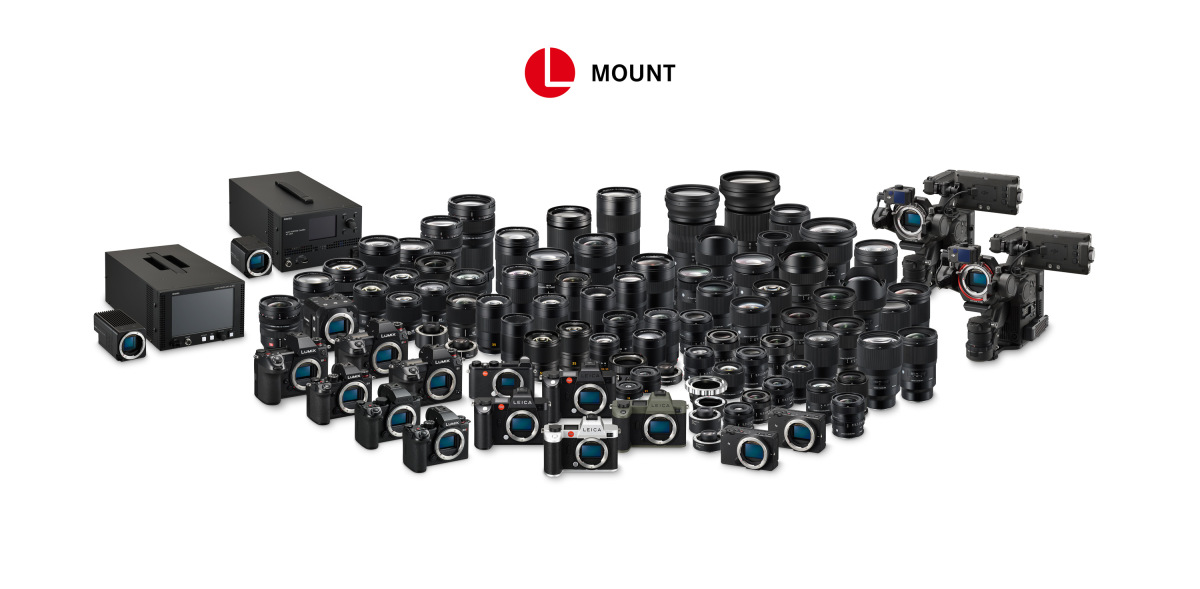
In the early days of digital photography, technology evolved quickly. This meant frequent upgrades were necessary to fix shortcomings and gain much-needed image quality and usability improvements. As photographers, this meant we were ever hungry for the next generation. But I really never felt this with the SL2. Certainly not initially and not even recently. I just returned from a landscape workshop in Norway and from Japan before that. The SL2 performed just as it always has on my many outings over the years – exceptionally. The camera is an absolute workhorse and delivers image quality that I could have only dreamed of back in my film days. Which led me to wonder, what could Leica really improve upon with its next generation SL3.
Well, the wait is over, and Leica has done what they do best. With the SL3, they have managed to produce a camera that embodies the core design and qualities of the SL System while pushing the technology envelope to deliver photographers’ most frequent requests. Let's dive into some of the biggest upgrades.
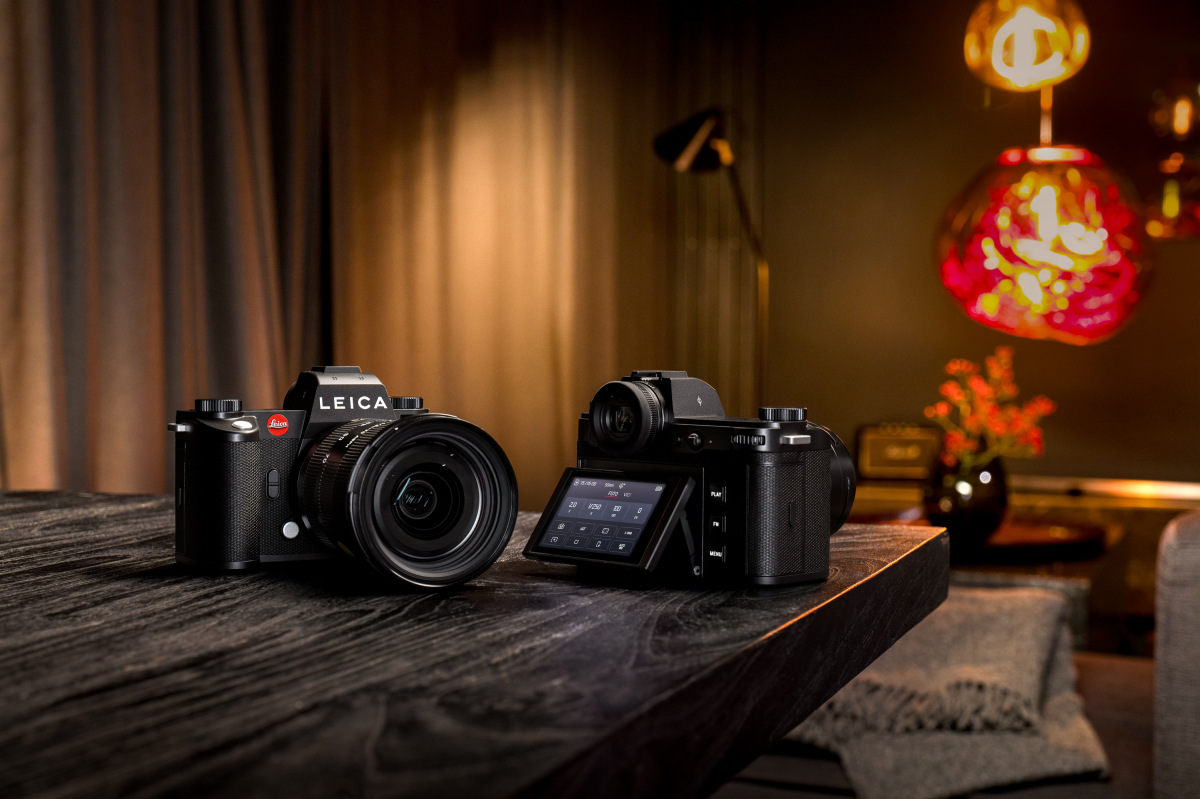
60 Megapixel BSI CMOS Sensor
Headlining the changes, the Leica SL3 is now packing the same cutting-edge 60 megapixel BSI CMOS sensor we've seen on the M11 and Q3. With an ISO range of 50-100,000 and an amazing 15-stops of dynamic range, this chip delivers next-level image quality. Just like on the M11, expect a bump in low light performance along with the increased resolution. This is made possible by utilizing BSI technology.

Back Side Illuminated sensors move the supporting electronics to the rear of the chip, allowing for significantly more photosensitive surface area and shallower pixel wells, resulting in no sacrifice versus a lower-resolution traditional design sensor with electronics in the top or middle substrate layers.
The increase in resolution also gives a nice bump to the APS-C crop mode when using TL lenses. Mounting one of the super-compact TL lenses will now offer 26 megapixel files, great for when you want to travel light and don't need massive files.

Triple Resolution
Also borrowed from its M11 and Q3 counterparts, the SL3 now offers triple resolution technology. Select L-DNG for full 60MP images, M-DNG for 36MP and S-DNG for 18MP files. While dropping the resolution of the sensor won't results in any improvement to low light ability, it will reduce file size and increase burst depth. Just as in those cameras, we generally recommend sticking with full-res L-DNG for highest image quality.
Maestro IV Processor + 8GB Buffer
The next-generation custom Maestro IV processor inside the SL3 boasts some serious horsepower. The SL3 boasts a maximum burst rate of 15 fps, despite the resolution increase. And with a generous 8GB of buffer memory, expect burst depths between 70 and 164 shots when shooting at a more modest 2 fps. Regardless of how you shoot, you'll never have to wait for the camera to keep up.

Upgraded video with up to Cine8K
Now possible with the beefy new processor and BSI sensor, the Leica SL3 now offers 8K video. And not just standard 16:9 8K. The SL3 can film in the more cinematic 17:9 Cine8K in 10-bit. For those not up on video standards, this means that the SL3 can record a whopping 35 megapixels at 30 frames per second. If 8K is overkill, the camera supports C4K up to 60fps and FullHD up to 120fps. And while currently limited to FullHD, the SL3 can also record internally to ProRes 422HQ. There's also now a dedicated timecode port on the side of the viewfinder to allow even greater video production flexibility.
New Autofocus with Contrast and Phase Detection
The SL3 features an even more advanced hybrid autofocus system which was debuted on the Q3. Employing traditional contrast detection as well as a phase detect with 315 fields, combined with depth mapping and AI-driven subject recognition, the AF is faster and more accurate than ever. Eye/Face/Body + Animal Detection works remarkably well, and assures sharp focus even for moving subjects.
Smaller and lighter
Looking at the body, you can immediately tell that it’s a little more compact than the SL2. Leica has managed to shrink the dimensions both in length and in height. Standing three millimeters shorter than the SL2 and five point two millimeters narrower from side to side, the camera still exudes the typical tank-like build synonymous with the Leica SL.
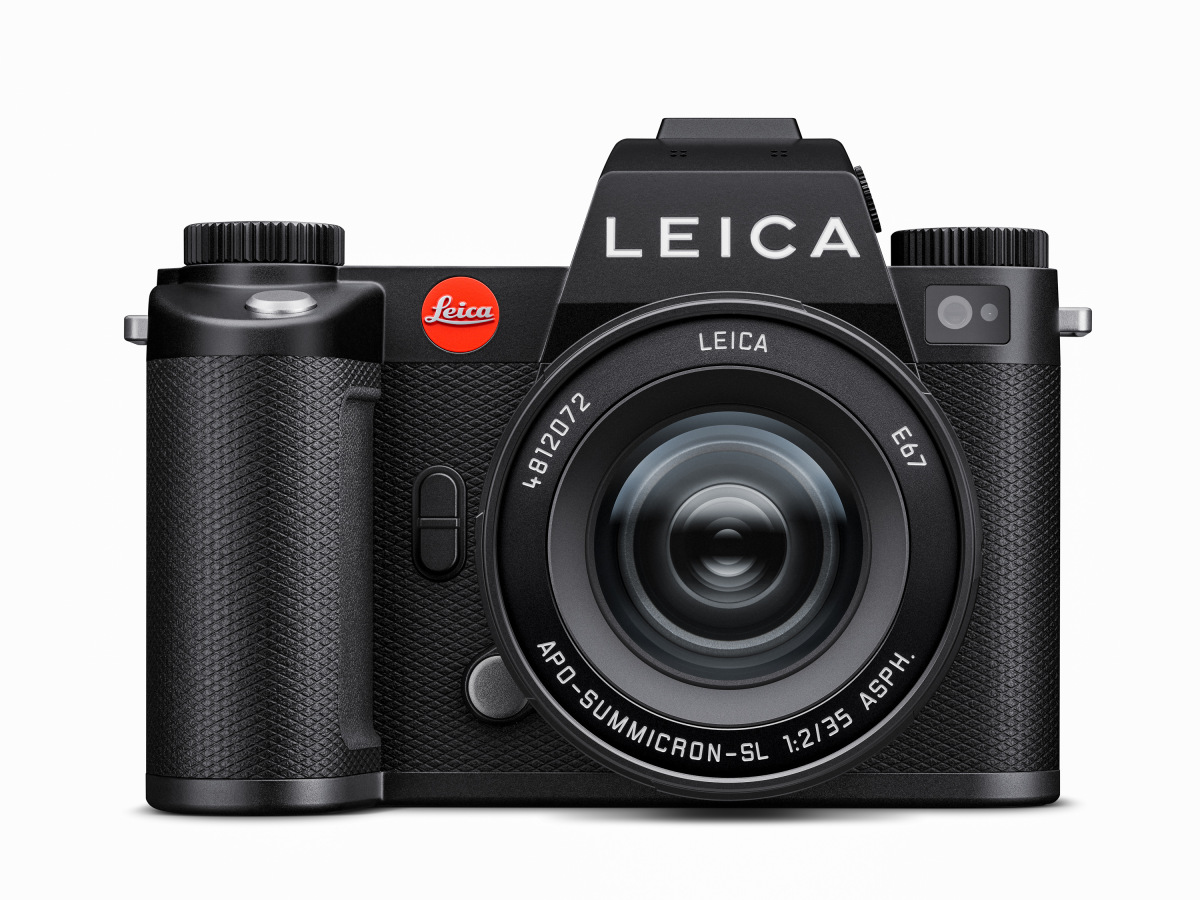
Along with the reduction in size, Leica has swapped out a full magnesium build for the previous aluminum construction. Along with a lighter-weight shutter mechanism, the SL3 clocks in a 70 grams lighter than its predecessor. Make no mistake though. The camera is still rock solid and feels incredible in the hand. The chunky grip and diamond textured cladding offer a confident hold. And the camera is still IP54 weather sealed and rated for extreme temperatures. While Leica guarantees functionality from -10 to +40 Celsius, they test internally from -40 to +70 C, with a camera even surviving at a bone chilling -50 C during testing on an Antarctic expedition.
New tiltable rear LCD screen
In a major departure for Leica, the SL3 follows the Q3 sporting an articulating rear LCD. Titling upwards and downwards, the screen offers additional flexibility for off-angle shooting. Whether holding overhead or close to the ground, the screen proves to be a useful addition. The 3.2-inch LCD touch panel itself gets upgraded as well, now clocking in at 2.3 million dots.

Revised control layout
In order to accommodate the new titling screen mechanism, the left-side buttons have been moved to the right of the screen. On the top shoulder of the camera, Leica has added an additional control wheel. Assignable like the one located next to the shutter release, this one defaults to ISO control, mirroring the ISO wheel on the top of the M11. Now, with two top dials and a rear thumb dial, all elements of exposure – ISO, aperture and shutter speed – can all be controlled intuitively with physical dials. As someone who often finds themselves in cold climates, having glove-friendly controls is a huge plus.

New power button
The power switch is now a power button, with an illuminated, multicolored LED ring surrounding it. Leica is clearly highlighting this as a major design shift for the SL3, with it featuring prominently in the initial startup animation. The possibilities of this LED look promising, but the underlying reason was one of functionality. As the SL3 and FOTOS app work much more closely and quicker together, the camera needs to be able to wake from sleep via the app.

New User Interface (UI)
One of the biggest changes though isn’t readily visible from the photos of the camera you might have seen. The new user interface has been completely redesigned and looks amazing. Clean, intuitive, responsive. Leica design at its best. The SL2 UI is already one of the easiest to use on the market, but the menu system in the SL3 is next level. Leica started with their fonts and status icons, increasing their size by a small but impactful ten percent. Line weights were harmonized, and icons were re-imagined to be as clear as possible. The design team coined the term ‘Leicons' to describe these and have over one hundred and fifty of them for the interface of the SL3.

Along with the cleanup, the main control center screen buttons are touch assignable with long presses, a new toggle-style indicator for menu items is super clear, everything is touch friendly and the live view interface now rotates.
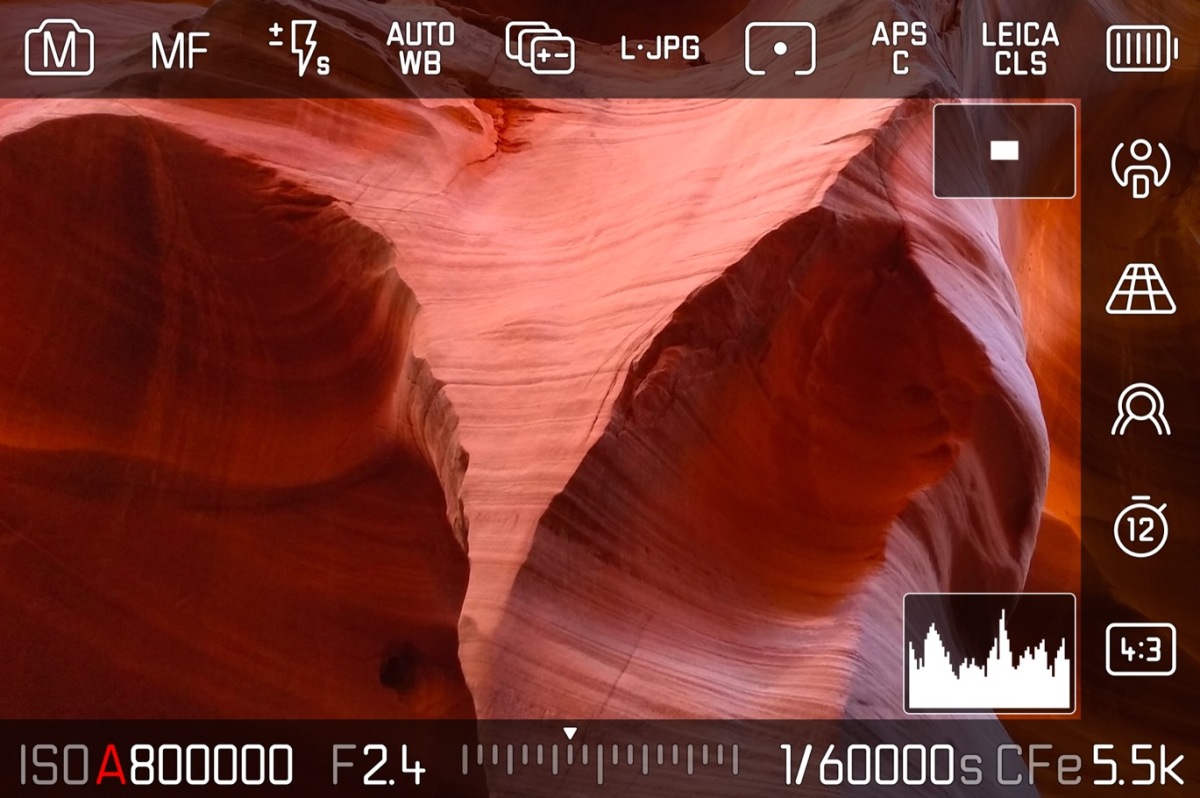
Users can control the overlay style of the icons in live view, with the addition of a customizable side bar. And the status overlay icons are clickable, to allow one touch quick changes while shooting. User profiles have been expanded, with six each for photo and video modes, and an entirely new video profile screen offers an easy way to change groups of video settings at once. The new UI is really one of the highlights of this camera.

USB-C and HDMI Ports
The full-sized HDMI port gets a spec bump to HDMI 2.1 to support greater resolution and frame rate options when sending to an external recorder or capture card, and the USB-C port now features transfer speeds up to 100MB/s, resulting in file transfers of less than one second per DNG file. Tethered shooting to Capture One and Lightroom is fully supported. The USB-C port also accepts greater power input, up to 27W, providing quick in-camera battery charging.

Upgraded Wi-Fi Speed
But you don't need a cable to enjoy rapid transfers to your mobile device. By incorporating MIMO 2×2 multichannel beam forming technology, the SL3 boasts 10x faster wireless speeds than the first generation SL. Where DNG files could take 10 seconds or more to transfer from the SL2, the SL33's even larger images take a mere two seconds. Even browsing all of your pictures on the card from FOTOS feels snappy and responsive.

Upgraded Storage
Still offering a tried-and-true SDXC UHS-II slot for backup, the camera’s primary storage gets an upgrade to CompactFlash Express Type B. This means capacities greater than a terabyte and speeds in excess of 2,000 MB/s. The cards are blazingly fast and when paired with a USB 3.2 Gen 2 reader, offer the fastest workflow available.
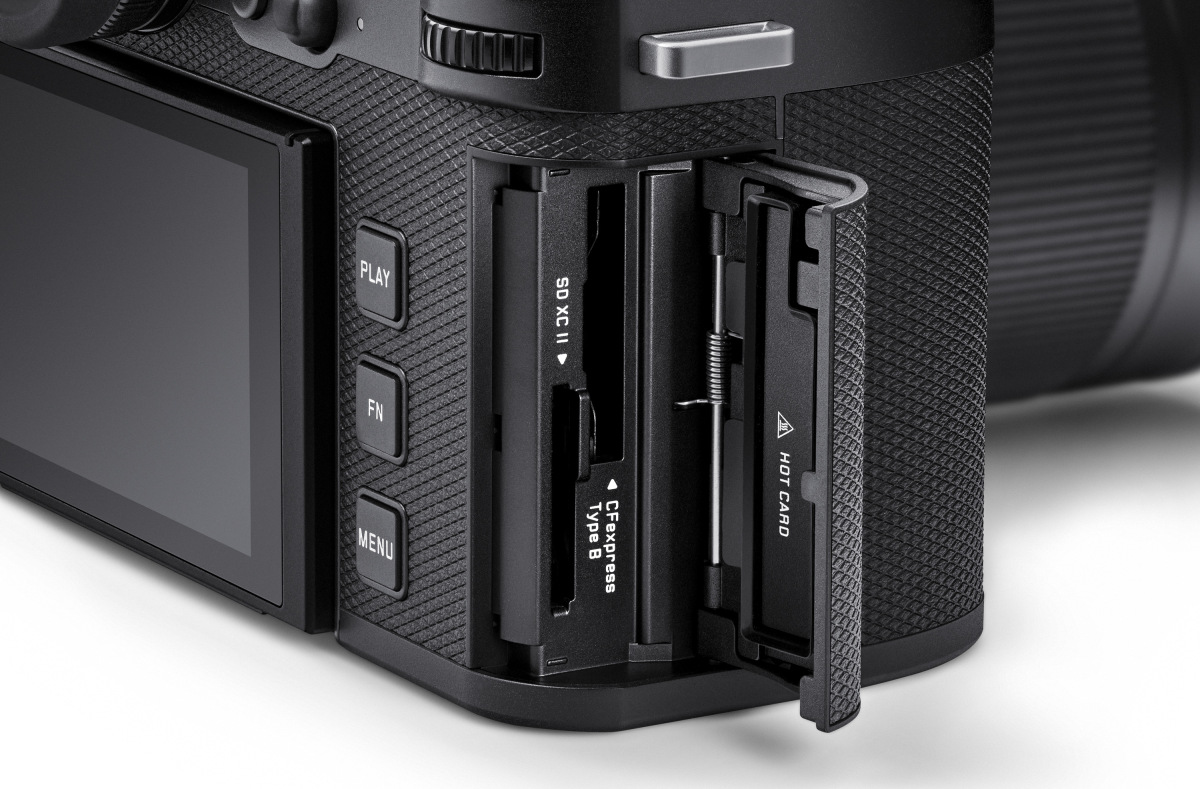
New Battery
Physically the same dimensions as the BP-DC4 used in the Q2 and SL2, the newly introduced BP-DC6 has 2200mAh on tap for the increased performance of the SL3. The camera is still backwards compatible with the previous 1860mAh battery, but will have reduced battery life and will limit video functions to 4K along with a lower continuous shooting rate. We'd recommend upgrading to the new battery. And yes, the higher capacity BP-DC6 is fully backwards compatible and will work with the SL2, SL2-S and SL601.
New Charger and Power Accessories
The camera supports quick charging in body via USB-C power delivery. Leica recommends using at least a twenty-seven-watt USB-C wall adapter to get the fastest charging available. And don’t worry if all you have is a one hundred forty-watt adapter for you Macbook pro. The camera has intelligent charge circuitry that prevents overdrawing power.
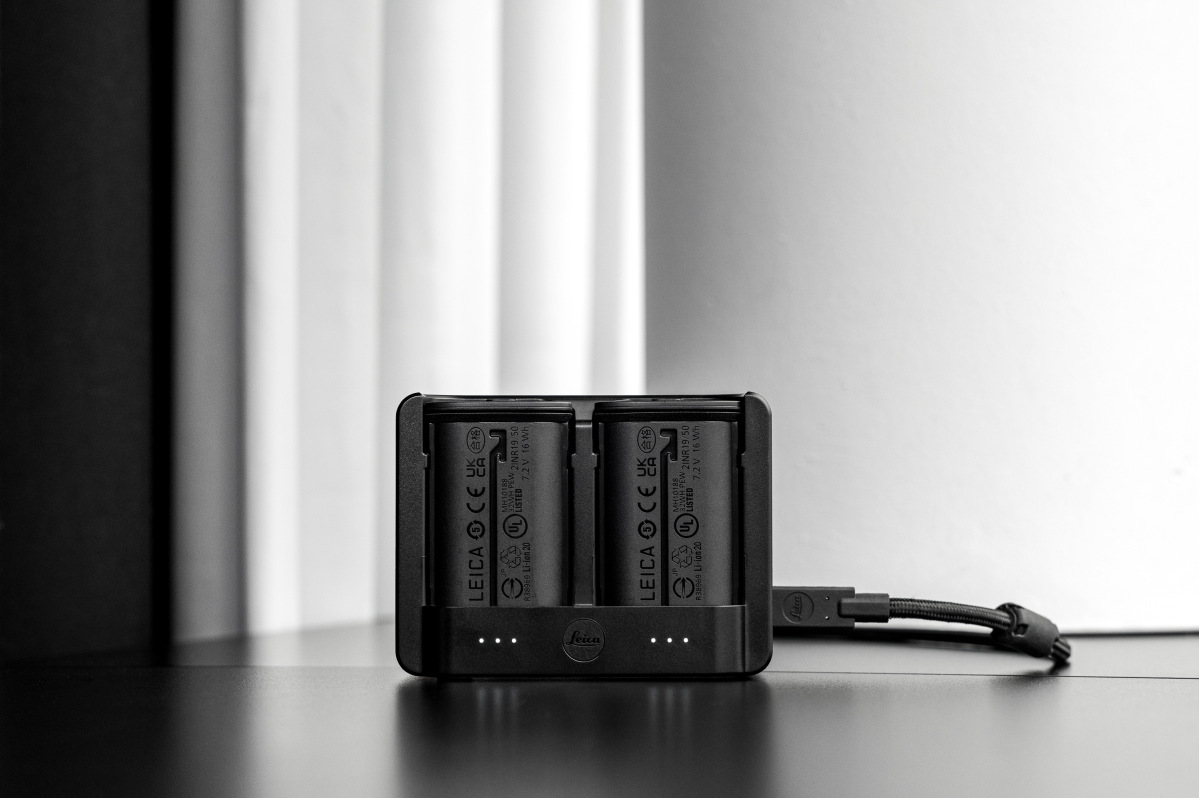
Of course, there is an available BC-SCL6 battery charger for those that want it. And thankfully, it’s a high-speed dual charger with convenient status LED lights for each battery. You can still use the legacy BP-SCL4 single charger from the SL2 and Q2 but charging will be a bit slower. Most SL3 owners will want to go for the Power Set, which includes the dual charger, an extra battery, AC adapter and extra charging cable. Leica is offering the set at a small discount over purchasing these pieces a la carte.

There is also a dummy battery, which Leica is calling a DC coupler. Both the new dual charger and the dummy battery come with USB-C inputs, allowing you to use a wide range of battery packs, wall adapters and longer charging cables. While the lack of an included charger seems like an oversight here, the enhanced USB-C charging ecosystem is a big win.

Rounding out the accessories is a new multifunction handgrip, the HG-SCL7. With a second shutter release button, joystick, thumb wheel and front dial, the handgrip offers the best vertical shooting experience. It also has space for a second battery, doubling the battery life of the camera. And the battery in the handgrip will charge from the camera’s USB-C port for those looking to use the setup in studio.

Summary of New Features
- 60MP BSI CMOS Sensor with Triple Resolution Technology 60/36/18 MP
- 15 Stops of dynamic range
- More compact size – 5.2mm narrower and 3.0mm shorter than SL2
- Lighter weight – 70g less than SL2
- Additional top function dial for easy access to all essential photo setttings
- New Maestro IV Processor with L2 Technology and 8GB of buffer memory
- New Hybrid Autofocus System (Phase Detect AF + Contrast Detection AF + Object Detection AF)
- New tiltable high-resolution rear touchscreen
- New UI with enhanced touch capability
- Redesigned top LCD
- Rotating EVF interface
- Ultra-fast CompactFlash Express Type B with backup SD UHS-II
- HDMI 2.1 Type A (full size)
- High-speed wireless connectivity with Bluetooth 5.1 and Wi-Fi 5 with MIMO
- 8K resolution video and ProRes support
- New battery with 18% more power than previous generation
- 10x faster wireless transfer speeds to the Leica FOTOS app with embedded MIMO Technology
Pricing, Availability and Ordering
Initial deliveries of the Leica SL3 will start within the next week for a price of $6,995. As with any major Leica camera launch, supply will be extremely limited for a number of months. If you are interested in ordering the SL3, you can do so at Leica Store Miami by clicking the button below, calling 305-921-4433 or sending an email to info@leicastoremiami.com. If you are interested in trading in any other Leica gear towards the purchase of the SL3, you can indicate so on the pre-order form.
Thoughts on the SL3
All in all, we have a really nice evolution with the SL3. Image quality gets a nice bump. More resolution. Better low light performance. Greater dynamic range. Hybrid autofocus system. The new body is smaller, lighter and more agile than before, without any compromise to durability or toughness. Improvements to both physical controls and touch functions combined with the tilting screen make a very ergonomic and intuitive system even more so. And it’s still an SL. If you’re familiar with the SL2, you’ll feel almost immediately at home with the SL3.

SL3 Video Content on Red Dot Forum YouTube
We've got a 15 minute overview of the new features of the SL3 as well as a two hour Red Dot Forum Camera Talk livestream where we take a deep dive into the new camera and how it compares against the SL2 (We go live at 8pm EST 3/7/24). If you're not already subscribed, click here to get subscribed!
Sample Images
Leica was nice enough to supply some sample images from the SL3. We'll be doing our own testing now that the camera is out, but after diving into these files, we're extremely impressed. Wonderful color and tonality. Exceptional detail and sharpness. And impressive high ISO results, even up to ISO 50,000. Be sure to click on the images to see a larger view.

1/250th @ f/8, ISO 100

1 sec @ f/8, ISO 200

1/500th @ f/2.4, ISO 3200
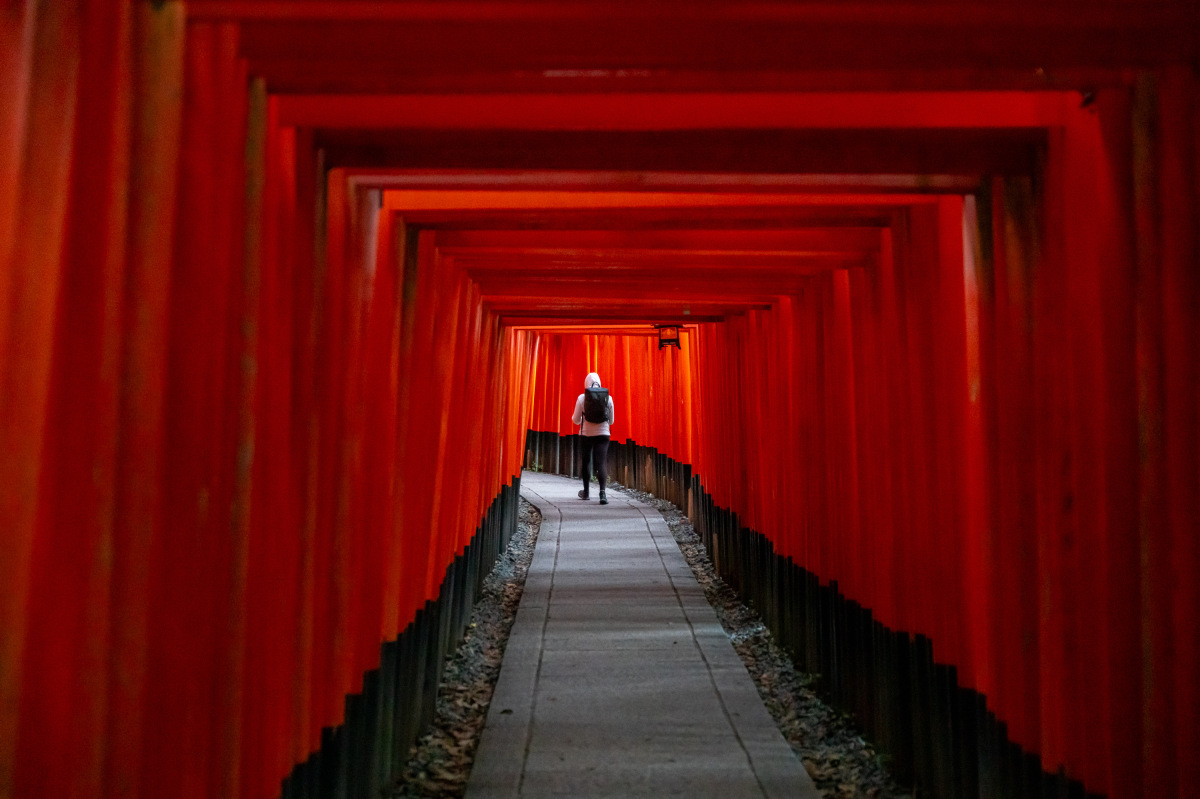
1/125th @ f/2.8, ISO 20,000
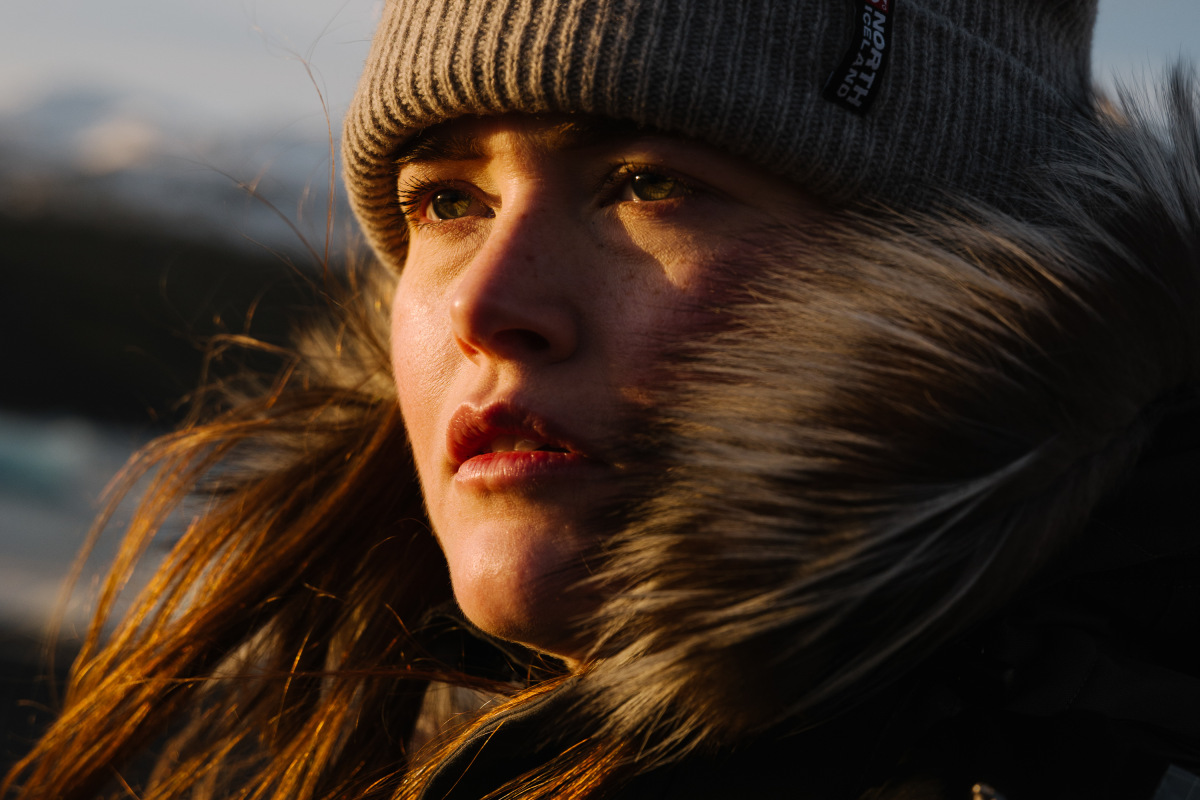
1/2000th @ f/3.2, ISO 200
Compared to SL2
Leica SL3 | Leica SL2 | |
| Sensor | 60.3 MP CMOS BSI | 47.3 MP CMOS |
| Variable Resolution | Yes: 60/36/18 MP | No |
| ISO Range | 50 – 100,000 | 50 – 50,000 |
| Dynamic Range | 15 stops | 14 stops |
| Processor | Maestro IV | Maestro III |
| Buffer | 8GB | 4GB |
| Display | 3.2 inch, 2.33 mill dots, tilting | 3.2 inch, 2.1 mill dots, fixed |
| EVF | Leica EyeRes®, Glass Optics, OLED 0.5″, 5.76 mill dots, 120 fps | Leica EyeRes®, Glass Optics, OLED 0.5″, 5.76 mill dots, 120 fps |
| AF System | Contrast & Phase Detection AF, DFD | Contrast Detection AF |
| Video | FHD, 4k, C4K, 8K, MP4 + MOV, .h265, ProRes (1080p) | FHD, 4k, C4k, MP4 + MOV |
| HDMI | HDMI 2.1 | HDMI 2.0 |
| Wireless | Wi-Fi 5(MIMO) / Bluetooth 5.1 | Wi-Fi 5 / Bluetooth 4.2 |
| Battery | 2200mAh (BP-SCL6) | 1860mAh (BP-SCL4) |
| Weight | 767 grams | 840 grams |
| Function Dials | 3 | 2 |
| Memory Cards | CF Express Type B; SD UHS II | SD UHS II |
| Custom Quick Menu | Yes | No |
| Touch Menu | Yes | No |
| UI Rotation | Yes | No |
| Live View Touch Icons | Yes | No |
| Apple MFI | Yes | No |
Press Release
The new mirrorless full-frame system camera from Leica pushes the boundaries of image quality, durability and versatility to new heights.
Wetzlar, March 7, 2024. In 2015, Leica Camera AG introduced the SL-System, uniquely combining the two worlds of photography and videography. From the beginning, Leica has focused on partnering with its users and the photographic community to ensure that their products achieve exceptional standards. The result is a system which meets the highest requirements in image quality, manufacturing quality, and ease of handling. Now, the long-established company presents the next generation of the mirrorless full- frame system: the Leica SL3.

The rigorous demands of professional photographers have long served as a benchmark and inspiration for the development of the system, in particular the Leica SL3. The result is an extremely versatile camera, offering unprecedented image quality in both photography and videography. The Leica SL3 combines state-of-the-art technology, extraordinary design, and masterful manufacturing – more compact, lighter, and even more user-friendly than its preceding model. The new functions of the Leica SL3 are based on an ongoing dialogue with professionals, which is highly valued and cultivated by the company in the ever-changing world of photography.
At the core of the Leica SL3, you can find the BSI CMOS full-frame sensor with Triple Resolution Technology, which is safely protected in a solid all-metal body with elegant leather. To meet a variety of photographic requirements, the sensor records files in DNG or JPEG format with a resolution of either 60, 36 or 18 MP. In each case, the full sensor surface is used. Together with the dynamic range expanded to 15 f-stops and the impressive ISO range from 50 to 100,000, the SL3 delivers remarkably detailed images in outstanding quality – in all light conditions.

With phase detection (PDAF), depth mapping (Object Detection AF), and contrast recognition (Contrast Detection AF), the innovative autofocus system of the SL3 combines the strengths of three technologies to create razor-sharp pictures even in dim light. In addition, intelligent subject recognition supports the photography of dynamic scenes.
The lens bayonet, which is based on the L-Mount standard developed by Leica, facilitates the use of outstanding lenses from all of the Leica camera systems. Additionally, it is compatible with a diverse array of ultra-wide to super-telephoto zoom lenses offered by L-Mount alliance partners. Therefore, the lens bayonet guarantees extensive system compatibility for the Leica SL3. Specifically, the exceptional potential of the renowned Leica M-Lenses is fully harnessed, thanks to the unique design of the image sensor and an external light sensor. The integrated in-body image stabilization further broadens the scope of application for M-Lenses.

The EyeRes® viewfinder of the Leica SL3 is equipped with an elaborately manufactured optical system made of glass lenses. It always shows the subject crystal clear with up to 120 frames per second and a resolution of 5.76 million pixels. The live preview enables full control over the exposure and composition of images even before releasing the shutter. Another new feature is the tiltable 3-inch high-res touchscreen with a high-quality tilting mechanism. Even more creative possibilities can be achieved thanks to its additional viewing angles.
Videos are recorded in a resolution of up to 8K, supported by efficient codecs such as H.265 and ProRes by Apple. A dedicated time code interface allows for professional image and sound synchronization on set. Throughout this process, the new Maestro- IV processor with L2 technology easily handles the vast amounts of data, resulting in pictures with magnificent color rendering as well as excellent noise performance.
Another highlight is the new user interface of the Leica SL3. Every optimization is aimed at enhancing user comfort such as ergonomics, tactile feel, and menu navigation. As a result, the grip, button layout, and overall camera design have been refined to further promote intuitive handling. The updated, streamlined icon and menu design offer a clear structure, facilitating even easier navigation. The distinct separation of photo and video modes proves especially beneficial as it is aided by a specific color code for differentiation: red for photo mode and yellow for video mode.

Furthermore, the camera’s main functions can be completely adapted to individual needs. The freely assignable FN keys and the optimized touch interaction in the menu add to the intuitive and comfortable operation of the camera. When photographing and filming, the Leica SL3’s user interface aligns itself in landscape or portrait format, depending on the camera position. Thanks to the convenient handling, improved ergonomics, robust design, and IP54 certification, photographers can focus on capturing the shot in any weather and environment. At the same time, the new Leica SL3 is noticeably lighter and more compact than its predecessors and is even more comfortable to use.
The Leica user experience undergoes continuous refinement. Regular firmware updates, influenced by valuable customer feedback, are seamlessly delivered to the SL3 through the Leica FOTOS app. This ensures the camera stays current and future-proof in a user-friendly manner.
The camera’s new interface and improved connectivity ensure a seamless professional workflow. There are slots for the memory cards CFexpress type B and UHS-II-SD, a USB-C port for high-speed data transmission, tethering, and power supply as well as a full- size HDMI 2.1 output for external monitors or recording equipment. Additionally, Bluetooth and Wi-Fi with MIMO technology ensure a stable and fast connection to the Leica FOTOS app. As a certified Apple “Made for iPhone® and iPad®” accessory, the Leica SL3, together with the included USB-C cable, enables a direct connection to Apple products.

The new BP-SCL6 battery, along with the separately available double charger, offers ample capacity. This dual charger allows for the simultaneous and faster charging of two batteries. The double charger and the additional battery are available individually or as an attractive set. Moreover, the accessories within the SL-System now include a new handgrip and a DC coupler. The DC coupler can be inserted into the camera’s battery slot to ensure a continuous power supply via USB-C. The new carrying strap with an innovative attachment and a hard-wearing wrist strap for the hand grip have also been specially designed for everyday professional photography use.

Leica Camera AG has taken the SL-System to a new level. With an optimized design, efficient user interface, and the versatile L-Mount bayonet, the Leica SL3 is a highly modern, intuitive full-frame camera with outstanding image quality. It combines precision, the best materials, and unprecedented manufacturing quality “Made in Germany”. Robust and reliable, it masters every challenge in photo- and videography, setting new standards in terms of user comfort and a seamless professional workflow with extended interfaces, improved connectivity, and useful accessories.
Tech Specs – Photo
| Designation | Leica SL3 |
| Camera type | Mirrorless full-frame system camera |
| Type No. | 5404 |
| Order No. | 10607 (EU/US/CN), 10608 (JP), 10609 (ROW) |
| Buffer memory | 8 GB |
| Frame Rate & Buffer Depth | 15 fps, 12 Bit: 60 DNG, 60 DNG + JPG, 60 JPG 9 fps, 12 Bit: 75 DNG, 65 DNG + JPG, 75 JPG 7 fps, 12 Bit: 80 DNG, 70 DNG + JPG, 80 JPG 6 fps, 14 Bit: 90 DNG, 75 DNG + JPG, 90 JPG 5 fps, 12 Bit: 90 DNG, 75 DNG + JPG, 90 JPG 4 fps, 14 Bit, AF: 100 DNG, 80 DNG + JPG, 105 JPG 2 fps, 14 Bit, AF: 400 DNG, 120 DNG + JPG, Unlimited JPG |
| Storage medium | UHS-II (recommended), UHS-I, SD/SDHC/SDXC card + CFexpress card type B (recommended) |
| Material | Magnesium and aluminum, leatherette covering, splash water protected in accordance with IEC Standard 60529 (protection type IP54) |
| Lens Mount | Leica L bayonet with contact strip for communication between lens and camera |
| Operating conditions | −10 to +40°C |
| Interfaces | ISO accessory shoe with additional control contacts, timecode interface, HDMI jack 2.1 Type A, USB 3.1 Gen1 Type C, Audio-Out 3.5mm/Audio-In 3.5mm, communication interface in the bottom cover for multifunction handgrip |
| Tripod thread | A 1⁄4 DIN 4503 (1⁄4”) with stainless steel in the base |
| Dimensions | 152mm wide, 108mm high, 85mm deep |
| Weight | Approx. 769.7g (without battery, SD card, body cap) |
| Sensor | CMOS sensor, 62.39MP/60.3MP (total/effective) |
| Processor | Leica Maestro IV |
| Filter | RGB color filter, UV/IR filter, no low-pass filter |
| File formats | Photo: DNG™ (raw data), DNG + JPG, JPG (DCF 2.0, Exif 2.31) |
| Image resolution | |
| DNG™ | L-DNG: 9520 x 6336 pixels (60.3 MP) M-DNG: 7404 x 4928 pixels (36.5 MP) S-DNG: 5288 x 3518 pixels (18.6 MP) |
| JPG | L-JPG: 9520 x 6336 pixels (60.3 MP) M-JPG: 7392 x 4928 pixels (36.4 MP) S-JPG: 5280 x 3512 pixels (18.5 MP) |
| DNG™ (APS-C) | L-DNG: 6256 x 4168 pixels (60.3 MP) M-DNG: 4868 x 3242 pixels (36.5 MP) S-DNG: 3476 x 2314 pixels (18.6 MP) |
| JPG (APS-C) | L-JPG: 6256 x 4160 pixels (60.3 MP) M-JPG: 4864 x 3232 pixels (36.4 MP) S-JPG: 3472 x 2304 pixels (18.5 MP) |
| File size | DNG™: approx. 70 MB, depending on resolution and image content JPG: depending on resolution and image content |
| Color depth | DNG™: 14bit (12bit also possible depending on the continuous shooting mode), JPG: 8bit |
| Color space | Photo: sRGB |
| Viewfinder (EVF) | Resolution: 5,760,000dots, 60fps or 120fps, magnification: approx. 0.76x at aspect ratio: 3:2 / approx. 0.78x at aspect ratio: 4:3, frame coverage: 100%, exit pupil position: 21mm, setting range –4/+2dpt, with eye sensor for automatic switchover between viewfinder and LCD panel, time delay 0.005s |
| LCD panel | 3.2” (backlight LED) with anti-fingerprint and anti-scratch coating, 2,332,800 dots, format 3:2, touch panel |
| Top display | 1.28” highly reflective trans-reflective monochrome LCD, 128x128pixels, viewing angle 120°, anti-fingerprint coating |
| Shutter type | Electronically controlled focal plane shutter |
| Shutter speeds | Mech. shutter: 60min to 1⁄8000s, electr. shutter function: 60s to 1⁄16000s, flash synchronization: up to 1⁄200s |
| Shutter button | Two-stage (1st stage: Activation of the camera electronics including autofocus and exposure metering, 2nd stage: Taking the picture) |
| Self-timer | Delay time: 2s, 6s, 12s or 30s |
| Drive Modes | Single, Continuous Shooting, Interval Shooting, Exposure Bracketing |
| Continuous shooting | 2 fps, 14 bit, AF: Mech. or electr. shutter, AFc, even if AFs or Intelligent AF selected4 fps, 14 bit, AF: Mech. or electr. shutter, AFc, even if AFs or Intelligent AF selected5 fps, 12 bit, AF: Mech. or electr. shutter, AFc, even if AFs or Intelligent AF selected6 fps, 14 bit: Mech. or electr. shutter, no refocusing7 fps, 12 bit: Mech. or electr. shutter, no refocusing9 fps, 12 bit: Electr. shutter, no refocusing15 fps, 12 bit: Electr. shutter, no refocusing |
| Focus Mode | Automatic or manualWith manual setting: optional magnifying glass function (Magnification) and edge marking (Focus Peaking) available as focus assist |
| Autofocus system | Hybrid-AF due to combination of contrast metering, depth mapping, and phase comparison metering with AF metering points in the sensor |
| Autofocus modes | Intelligent AF (automatically refocuses as soon as something changes in the scene), AFs, AFc, AF setting can be saved, optional Touch AF |
| Autofocus metering methods | Multi-field, Spot (can be shifted), Field (can be shifted and scaled), Zone (can be shifted and scaled), Tracking, Eye/Face/Body Detection, Animals (Beta) |
| Autofocus metering fields | 315 |
| Exposure metering | TTL (exposure metering through the lens) |
| Exposure metering methods | Spot, Center-Weighted, Highlight-Weighted, Multi-Field |
| Exposure modes | Program AE mode (P), aperture-priority mode (A): manual aperture setting, shutter-priority mode (S): manual shutter speed setting, Manual (M): manual setting for shutter speed and aperture |
| Exposure compensation | ±3EV in 1⁄3EV increments or 1⁄2EV increments |
| Automatic bracketing | 3 or 5 frames, graduations between shoots up to 3EV, in 1⁄3EV increments, additional optional exposure compensation: up to ±3EV |
| ISO sensitivity range | Photo (Auto ISO): 100-100,000Photo (Manual ISO): 50-100,000 |
| Dual Basis ISO | Low Basis ISO (Photo): 50-280 High Basis ISO (Photo): 320-100,000 |
| White balance | Automatic (Auto), default (Daylight, Cloudy, Shadow, Tungsten, HMI, Fluorescent (warm), Fluorescent (cool), Flash), manual metering (Gray Card (pipette), Gray Card), manual color temperature settings (Color Temperature, 2000K to 11500K) |
| Flash unit connector | Via the accessory shoe |
| Flash synchro socket | For flash synchronization (photo mode only) |
| Flash sync time | 1⁄200s, slower shutter speeds available, automatic switchover to TTL linear flash mode with HSS-compatible Leica system flash units if sync time is undercut |
| Flash exposure metering | Using center-weighted TTL pre-flash metering with Leica flash units (SF26, SF40, SF58, SF60, SF64) or with system-compatible flash units, remote controlled flash SFC1 |
| Flash exposure compensation | SF40: ±2EV in 1⁄2EV incrementsSF60: ±2EV in 1⁄3EV increments |
| Microphone | Stereo internal + microphone input 3.5mm stereo jack |
| Speaker | Mono internal + headphones output 3.5mm stereo jack |
| WLAN | The Leica FOTOS app is required to use the WLAN function. The Leica app is available from the Apple App Store™ or the Google Play Store™. |
| 2.4 GHz (EU/US/CN) | IEEE802.11b/g/n: Channel 1–11 (2412–2462 MHz) |
| 5 GHz Client mode (indoor use only) | IEEE802.11a/n/ac: Channel 36–64 (5180–5320 MHz) |
| 5 GHz Access point + client mode | IEEE802.11a/n/ac: Channel 149–165 (5745–5825MHz) |
| Encryption method | WLAN-compatible WPA2™ |
| Bluetooth | Bluetooth 5.0 LE: Channel 0–39 (2402–2480MHz) |
| GPS | Not available everywhere due to country-specific legislation; can be added via the Leica FOTOS app. Data is written to Exif header of the picture files. |
| Menu languages | English, German, French, Italian, Spanish, Portuguese, Russian, Japanese, Simplified Chinese, Traditional Chinese, Korean |
| Rechargeable battery (Leica BP-SCL6) | Lithium-ion rechargeable battery, rated voltage: 7.2V (DC); capacity: 2200mAh (min.), 260 shots (based on CIPA standard), 1350 shots (based on CIPA standard with adapted shooting cycle*) with Displays/AF Auto Off = 5 s); manufacturer: Panasonic Energy (Wuxi) Co. Ltd., Made in China |
| USB-C power adapter (Leica ACA-SCL6) (optional) | Input: AC 100–240V, 50/60Hz, 0.25A, automatic switchover; Output: DC 5V/9V, 3A; Manufacturer: Salom Electric (Xiamen) Co., Ltd., Made in China |
| Dual Charger (Leica BC-SCL6) (optional) | Input: DC 5V/3A, 9 V/3A, automatic switchover; Output: DC 8.4V, 850 mA/1000mA; Manufacturer: Salom Electric (Xiamen) Co., Ltd., Made in China |
| Charging via USB | During operation: 9V/3A (min. 27W)With camera switched off: 5V/1500mA (2.5W or greater) |
| Scope of Delivery | Leica SL3, Battery (BP-SCL6), USB-C cable, Carrying strap, Quick Start Guide |
| Warranty (USA) | 2 years, extendable to 3 years |
Tech Specs – Video
| Video File Formats | MP4: h.265, AAC, 48 kHz/16 bit MP4: h.264, AAC, 48 kHz/16 bit MOV: h.265, LPCM, 48 kHz/24 bit MOV: h.264, LPCM, 48 kHz/24 bitProRes: LPCM, 48 kHz/24 bit |
| Video Length | Max length depending on ambient temperature and available memory space |
| Color Space | Rec. 709/Rec. 2020 (HLG/L-Log) |
| Video Resolution | C8K (17:9): 8192 x 4320 8K (16:9): 7680 x 4320 C4K (17:9): 4096 x 2160 4K (16:9): 3840 x 2160 FHD (16:9): 1920 x 1080 |
| Video frame rate/bit rate | |
| MOV C8K (recording to SD) | 29.97 fps: C8K 4:2:0/10 bit, h.265, L-GOP, 300 Mbps 25.00 fps: C8K 4:2:0/10 bit, h.265, L-GOP, 300 Mbps 24.00 fps: C8K 4:2:0/10 bit, h.265, L-GOP, 300 Mbps 23.98 fps: C8K 4:2:0/10 bit, h.265, L-GOP, 300 Mbps |
| MOV C8K (HDMI output without HLG/L-Log and without recording to SD) | 29.97 fps: 8K 4:2:0/8 bit, h.265, L-GOP, 300 Mbps 25.00 fps: 8K 4:2:0/8 bit, h.265, L-GOP, 300 Mbps 24.00 fps: 8K 4:2:0/8 bit, h.265, L-GOP, 300 Mbps 23.98 fps: 8K 4:2:0/8 bit, h.265, L-GOP, 300 Mbps |
| MOV C8K (HDMI output with HLG/L-Log or during recording to SD) | 29.97 fps: C4K 4:2:2/10 bit, h.265, L-GOP, 300 Mbps 25.00 fps: C4K 4:2:2/10 bit, h.265, L-GOP, 300 Mbps 24.00 fps: C4K 4:2:2/10 bit, h.265, L-GOP, 300 Mbps 23.98 fps: C4K 4:2:2/10 bit, h.265, L-GOP, 300 Mbps |
| MOV 8K (recording to SD) | 29.97 fps: 8K 4:2:0/10 bit, h.265, L-GOP, 300 Mbps 25.00 fps: 8K 4:2:0/10 bit, h.265, L-GOP, 300 Mbps 24.00 fps: 8K 4:2:0/10 bit, h.265, L-GOP, 300 Mbps 23.98 fps: 8K 4:2:0/10 bit, h.265, L-GOP, 300 Mbps |
| MOV 8K (HDMI output without HLG/L-Log and without recording to SD) | 29.97 fps: 8K 4:2:0/8 bit, h.265, L-GOP, 300 Mbps 25.00 fps: 8K 4:2:0/8 bit, h.265, L-GOP, 300 Mbps 24.00 fps: 8K 4:2:0/8 bit, h.265, L-GOP, 300 Mbps 23.98 fps: 8K 4:2:0/8 bit, h.265, L-GOP, 300 Mbps |
| MOV 8K (HDMI output with HLG/L-Log or during recording to SD) | 29.97 fps: 4K 4:2:2/10 bit, h.265, L-GOP, 300 Mbps 25.00 fps: 4K 4:2:2/10 bit, h.265, L-GOP, 300 Mbps 24.00 fps: 4K 4:2:2/10 bit, h.265, L-GOP, 300 Mbps 23.98 fps: 4K 4:2:2/10 bit, h.265, L-GOP, 300 Mbps |
| MOV C4K | 59.94 fps: 4:2:2/10 bit (SD & HDMI), h.264, ALL-I, 600 Mbps 50.00 fps: 4:2:2/10 bit (SD & HDMI), h.264, ALL-I, 600 Mbps 48.00 fps: 4:2:2/10 bit (SD), h.264, ALL-I, 600 Mbps 24.00 fps: 4:2:2/10 bit (HDMI), h.264, ALL-I, 600 Mbps 47.95 fps: 4:2:2/10 bit (SD), h.264, ALL-I, 600 Mbps 23.98 fps: 4:2:2/10 bit (HDMI), h.264, ALL-I, 600 Mbps 29.97 fps: 4:2:2/10 bit (SD & HDMI), h.264, ALL-I, 400 Mbps 25.00 fps: 4:2:2/10 bit (SD & HDMI), h.264, ALL-I, 400 Mbps 24.00 fps: 4:2:2/10 bit (SD & HDMI), h.264, ALL-I, 400 Mbps 23.98 fps: 4:2:2/10 bit (SD & HDMI), h.264, ALL-I, 400 Mbps |
| MOV 4K | 59.94 fps: 4:2:2/10 bit (SD & HDMI), h.264, ALL-I, 600 Mbps 50.00 fps: 4:2:2/10 bit (SD & HDMI), h.264, ALL-I, 600 Mbps 48.00 fps: 4:2:2/10 bit (SD), h.264, ALL-I, 600 Mbps 24.00 fps: 4:2:2/10 bit (HDMI), h.264, ALL-I, 600 Mbps 47.95 fps: 4:2:2/10 bit (SD), h.264, ALL-I, 600 Mbps 23.98 fps: 4:2:2/10 bit (HDMI), h.264, ALL-I, 600 Mbps 29.97 fps: 4:2:2/10 bit (SD & HDMI), h.264, ALL-I, 400 Mbps 25.00 fps: 4:2:2/10 bit (SD & HDMI), h.264, ALL-I, 400 Mbps 24.00 fps: 4:2:2/10 bit (SD & HDMI), h.264, ALL-I, 400 Mbps 23.98 fps: 4:2:2/10 bit (SD & HDMI), h.264, ALL-I, 400 Mbps |
| MOV FHD | 119.88 fps: 4:2:2/10 bit (SD & HDMI), h.264, ALL-I, 400 Mbps 100.00 fps: 4:2:2/10 bit (SD & HDMI), h.264, ALL-I, 400 Mbps 59.94 fps: 4:2:2/10 bit (SD & HDMI), h.264, ALL-I, 200 Mbps 50.00 fps: 4:2:2/10 bit (SD & HDMI), h.264, ALL-I, 200 Mbps 48.00 fps: 4:2:2/10 bit (SD), h.264, ALL-I, 200 Mbps 24.00 fps: 4:2:2/10 bit (HDMI), h.264, ALL-I, 200 Mbps 47.95 fps: 4:2:2/10 bit (SD), h.264, ALL-I, 200 Mbps 29.97 fps: 4:2:2/10 bit (SD & HDMI), h.264, ALL-I, 200 Mbps 25.00 fps: 4:2:2/10 bit (SD & HDMI), h.264, ALL-I, 200 Mbps 24.00 fps: 4:2:2/10 bit (SD & HDMI), h.264, ALL-I, 200 Mbps 23.98 fps: 4:2:2/10 bit (SD & HDMI), h.264, ALL-I, 200 Mbps |
| MOV FHD Slow Motion | Sensor: 119.88 fps: 4:2:0/10 bit (SD & HDMI), h.265, L-GOP, 100 Mbps Recording/Playback: 29.97 fps: 4:2:0/10 bit (SD & HDMI), h.265, L-GOP, 100 Mbps Sensor: 100.00 fps: 4:2:0/10 bit (SD & HDMI), h.265, L-GOP, 100 Mbps Recording/Playback: 25.00 fps: 4:2:0/10 bit (SD & HDMI), h.265, L-GOP, 100 Mbps |
| MOV FHD ProRes | 59.94 fps: 422HQ, ProRes, 454 Mbps 50.00 fps: 422HQ, ProRes, 378 Mbps 29.97 fps: 422HQ, ProRes, 227 Mbps 25.00 fps: 422HQ, ProRes, 189 Mbps 24.00 fps: 422HQ, ProRes, 182 Mbps 23.98 fps: 422HQ, ProRes, 181 Mbps |
| MP4 8K (recording to SD) | 29.97 fps: 8K 4:2:0/10 bit, h.265, L-GOP, 300 Mbps 25.00 fps: 8K 4:2:0/10 bit, h.265, L-GOP, 300 Mbps 23.98 fps: 8K 4:2:0/10 bit, h.265, L-GOP, 300 Mbps |
| MP4 8K (HDMI output without recording to SD) | 29.97 fps: 8K 4:2:0/8 bit, h.265, L-GOP, 300 Mbps 25.00 fps: 8K 4:2:0/8 bit, h.265, L-GOP, 300 Mbps 23.98 fps: 8K 4:2:0/8 bit, h.265, L-GOP, 300 Mbps |
| MP4 8K (HDMI output during recording to SD) | 29.97 fps: 4K 4:2:2/10 bit, h.265, L-GOP, 300 Mbps 25.00 fps: 4K 4:2:2/10 bit, h.265, L-GOP, 300 Mbps 23.98 fps: 4K 4:2:2/10 bit, h.265, L-GOP, 300 Mbps |
| MP4 4K | 59.94 fps: 4:2:0 / 10 bit (SD & HDMI), h.265, L-GOP, 100 Mbps 50.00 fps: 4:2:0 / 10 bit (SD & HDMI), h.265, L-GOP, 100 Mbps 29.97 fps: 4:2:0 / 8 bit (SD & HDMI), h.264, L-GOP, 100 Mbps 25.00 fps: 4:2:0 / 8 bit (SD & HDMI), h.264, L-GOP, 100 Mbps 23.98 fps: 4:2:0 / 8 bit (SD & HDMI), h.264, L-GOP, 100 Mbps |
| MP4 FHD | 59.94 fps: 4:2:0 / 8 bit (SD & HDMI), h.264, L-GOP, 28 Mbps 50.00 fps: 4:2:0 / 8 bit (SD & HDMI), h.264, L-GOP, 28 Mbps 29.97 fps: 4:2:0 / 8 bit (SD & HDMI), h.264, L-GOP, 20 Mbps 25.00 fps: 4:2:0 / 8 bit (SD & HDMI), h.264, L-GOP, 20 Mbps 23.98 fps: 4:2:0 / 8 bit (SD & HDMI), h.264, L-GOP, 24 Mbps |
| Bit Rate | 8bit/10bit for recordings on SD card, 10bit for HDMI output |
| Video Gamma | Rec. 709, L-Log Rec. 2020, HLG Rec. 2020Further information can be found in the “L-Log Reference Manual” for download on the Leica homepage. |
| ISO sensitivity range (Video) | Video (Auto): 100-100,000Video (Manual): 50-100,000Video L-Log (Auto): 200-100,000Video L-Log (Manual): 200-100,000HLG (Auto): 400-100,000HLG (Manual): 400-100,000 |
| Dual Basis ISO | Low Basis ISO Video: 50-280High Basis ISO Video: 320-100,000Low Basis ISO Video L-Log: 200-560High Basis ISO Video L-Log: 640-100,000Low Basis ISO HLG: 400-1100High Basis ISO HLG: 12000-100,000 |

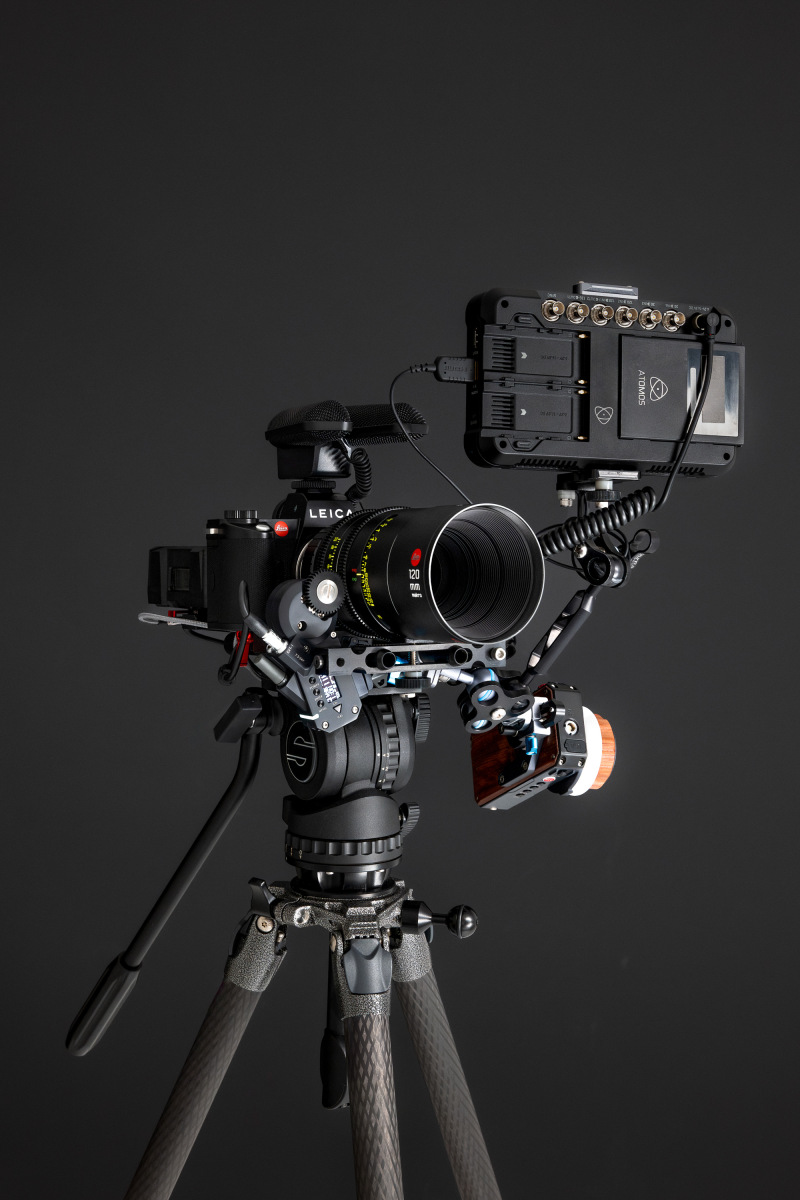
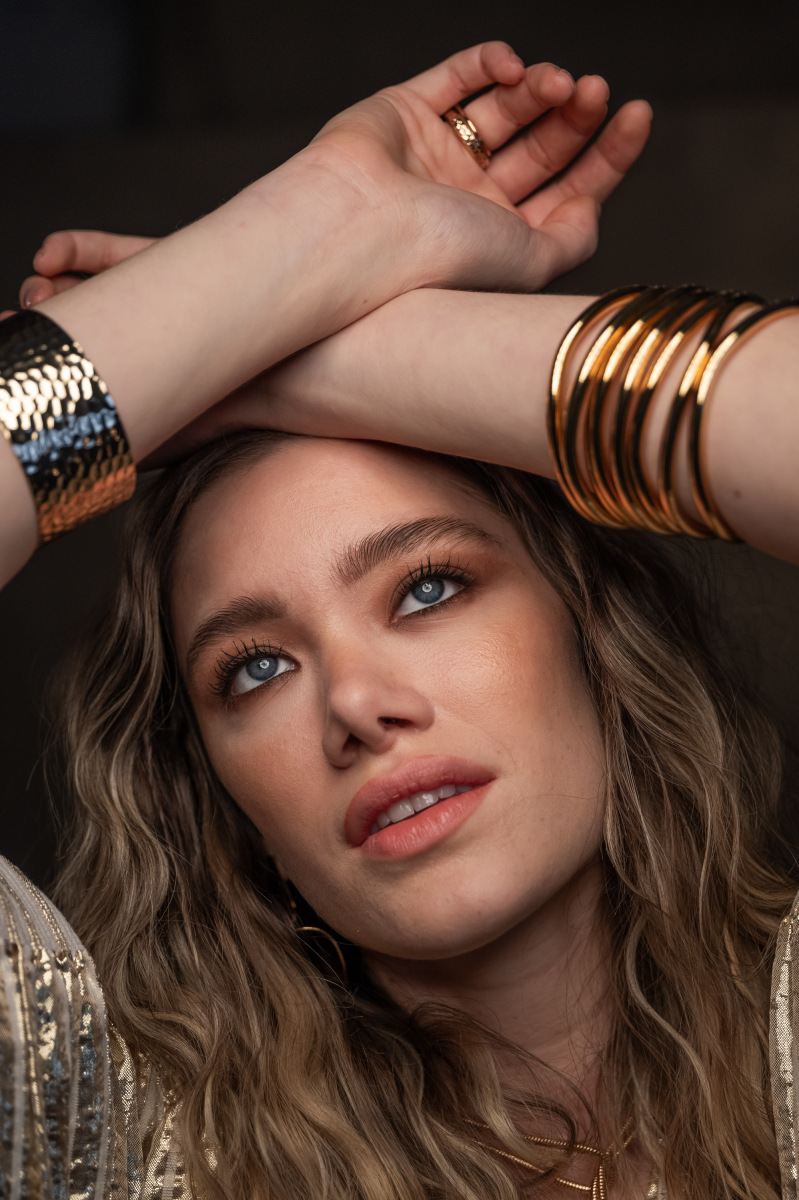

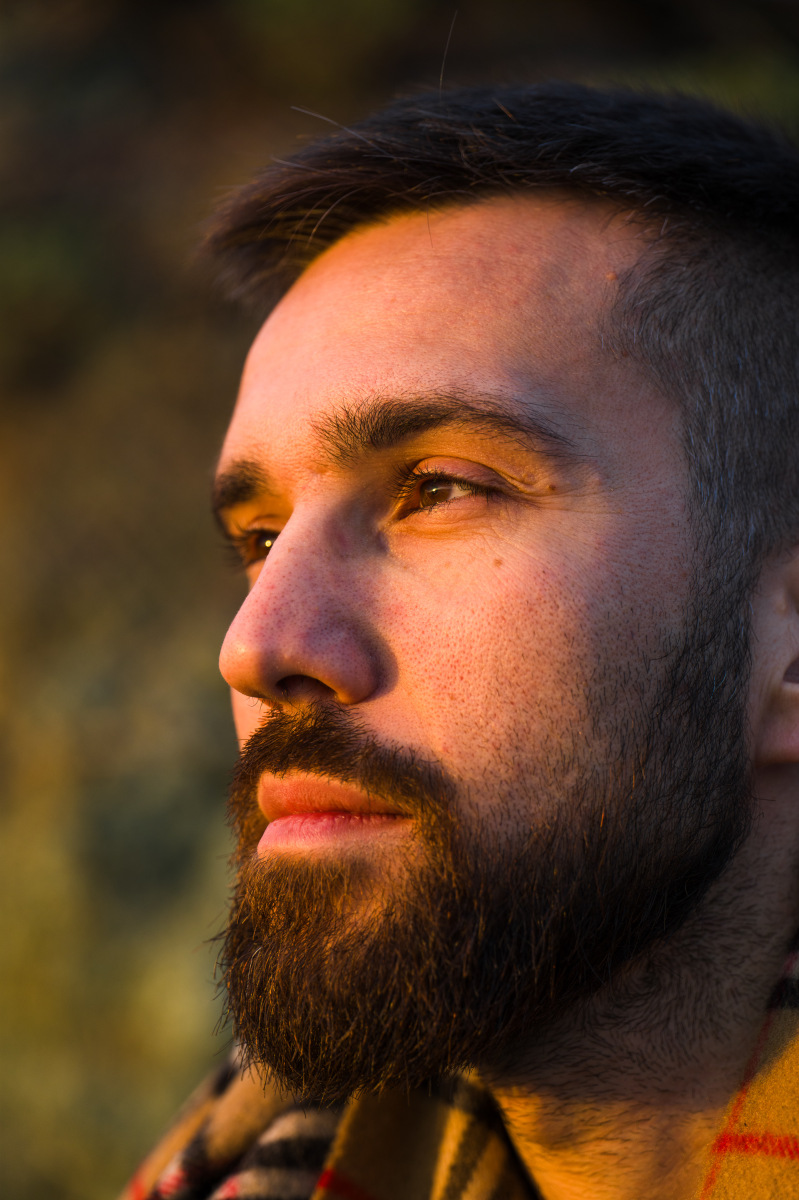

Leave a Reply